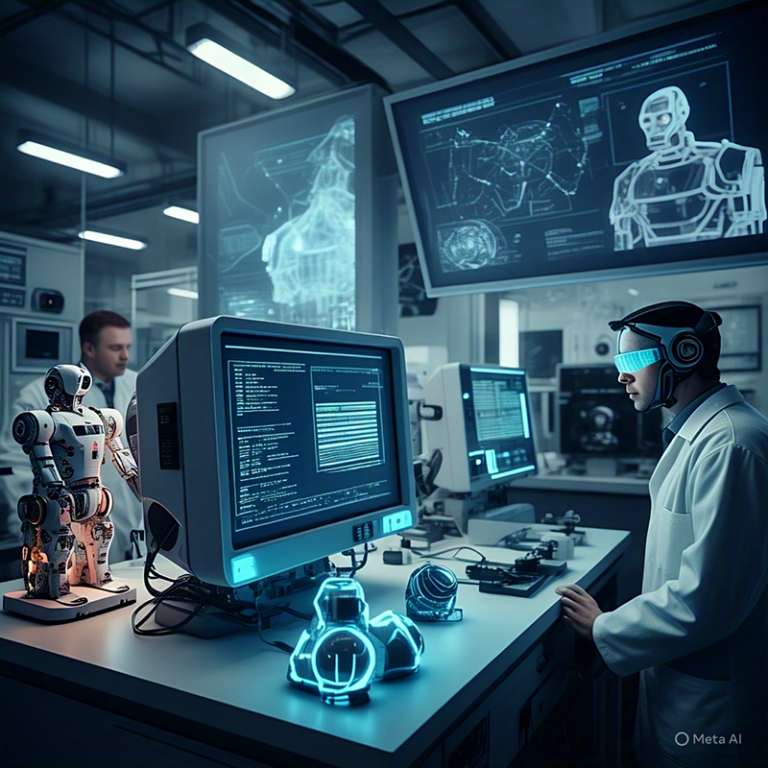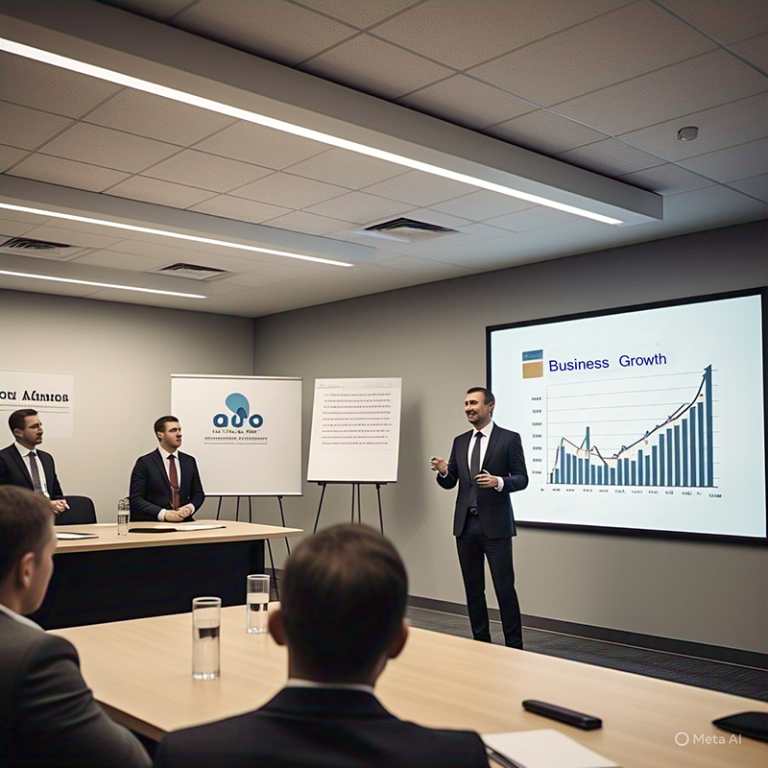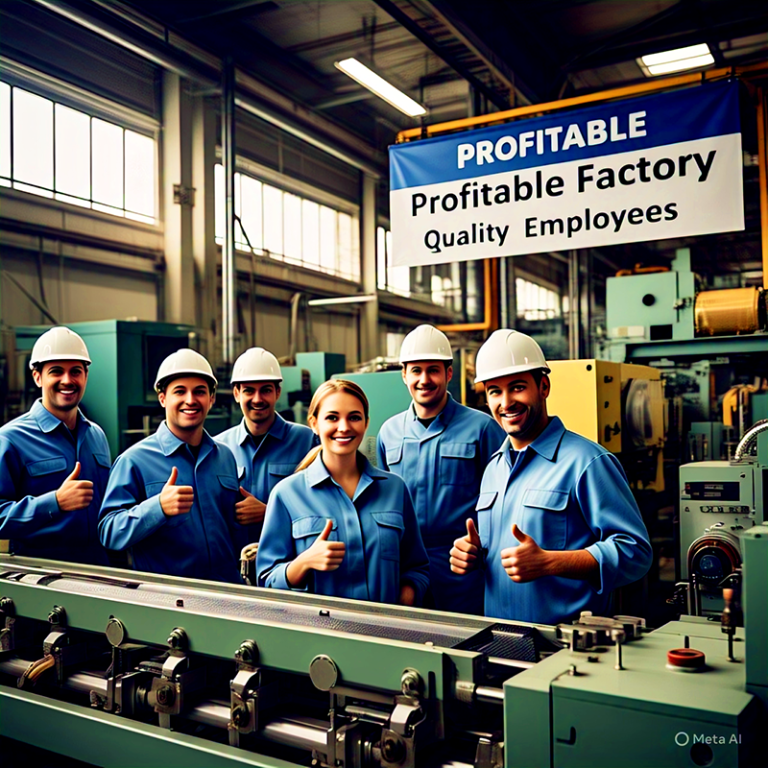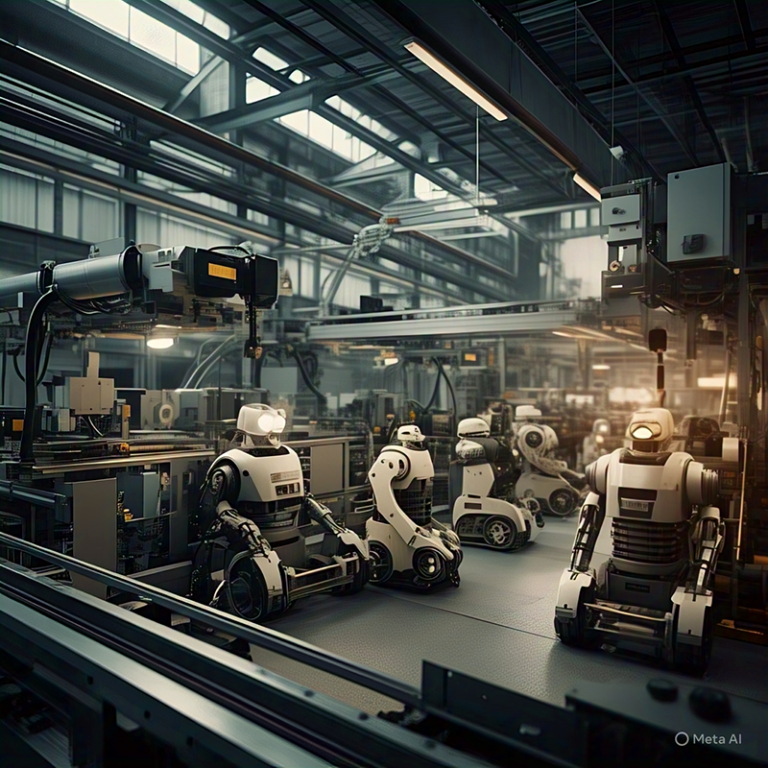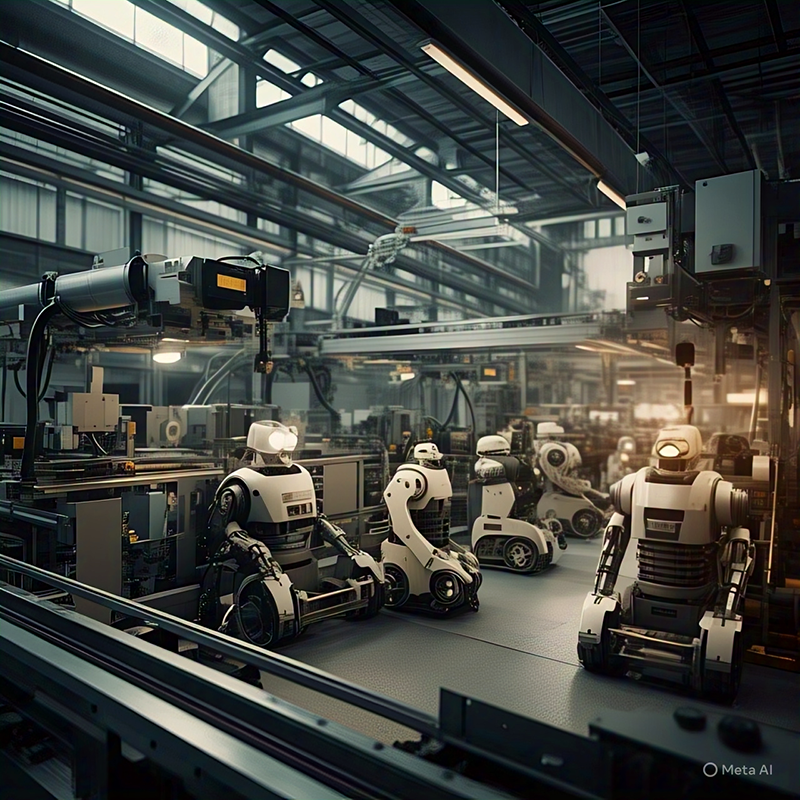
Picture this: It’s Monday morning, and while you’re having your coffee, your business is already processing customer orders, updating inventory levels, scheduling deliveries, sending personalized follow-up emails, and even predicting which customers are likely to place orders next week. All without a single human touching a keyboard.
Sounds like science fiction? Welcome to 2025, where this is just another day at the office for companies that have embraced modern automation.
But here’s what’s fascinating – and a bit mind-bending – about where we are right now. We’re living through the biggest automation revolution since the industrial age, yet most businesses are still stuck in automation approaches that would have been familiar to a factory manager from the 1980s.
The gap between what’s possible and what most companies are actually doing is staggering. And frankly, it’s creating massive competitive advantages for the companies that get it right.

The Old School: Traditional Automation Approaches
Let’s start with where most businesses are today. Traditional automation has been around for decades, and it’s served us well. Think about the classic examples: assembly line robots, automated billing systems, scheduled email campaigns, and basic workflow software.
Rule-Based Automation
Traditional automation operates on simple if-then logic. If a customer places an order, then send a confirmation email. If inventory drops below 50 units, then reorder stock. If it’s the first of the month, then generate financial reports.
This approach works great for predictable, repetitive tasks with clear rules. Manufacturing companies have used this for years to automate production lines. Accounting departments use it for routine transactions. HR departments use it for onboarding workflows.
Scheduled Operations
Most traditional automation runs on fixed schedules. Reports generate every Monday at 9 AM. Inventory checks happen twice a week. Marketing emails go out every Thursday. Backup systems run every night at midnight.
Again, this works fine for routine operations, but it’s rigid and doesn’t adapt to changing conditions or unexpected events.
Departmental Silos
Here’s where traditional automation often breaks down: it’s typically implemented department by department, creating automated islands that don’t talk to each other very well. Sales automation doesn’t integrate smoothly with inventory management. Manufacturing automation operates independently from demand forecasting. Customer service automation doesn’t learn from marketing interactions.
The result? You get efficiency gains within departments, but you miss the bigger opportunities for organization-wide optimization.
The New Reality: AI-Enabled Automation
Now, let’s talk about what’s possible today. AI-enabled automation isn’t just traditional automation with a fancy new label – it’s a fundamentally different approach that’s changing what we can automate and how effectively we can do it.
Intelligent Decision Making
Instead of simple if-then rules, AI-enabled automation can make complex decisions based on multiple variables, historical patterns, and predictive modeling. It doesn’t just follow rules – it learns, adapts, and improves over time.
For example, instead of reordering inventory when it hits a predetermined level, AI can predict demand based on seasonal patterns, marketing campaigns, economic indicators, and customer behavior trends. It might decide to order more of certain products before a predicted surge in demand, or delay orders if it predicts a slowdown.
Contextual Awareness
Modern AI automation understands context in ways that traditional automation never could. It can read and understand unstructured data like emails, documents, customer service tickets, and even social media posts.
This means it can automate tasks that previously required human judgment, like categorizing customer inquiries, prioritizing support tickets based on urgency and customer value, or even drafting initial responses to complex customer questions.
Continuous Learning and Optimization
Perhaps most importantly, AI-enabled automation gets smarter over time. Every interaction, every decision, every outcome becomes training data that improves future performance.
Traditional automation does the same thing the same way forever unless someone manually updates the rules. AI automation evolves, adapts, and optimizes itself continuously.
Real-World Applications That Are Changing the Game
Let me share some practical applications that demonstrate the power of modern automation. These aren’t theoretical examples – these are real implementations that companies are using right now to gain competitive advantages.
Manufacturing and Production
Predictive Maintenance
Instead of scheduled maintenance or waiting for equipment to break down, AI systems monitor equipment performance in real-time and predict when maintenance is needed. This prevents unexpected downtime while avoiding unnecessary maintenance costs.
One manufacturing client reduced unplanned downtime by 40% and maintenance costs by 25% using predictive maintenance powered by IoT sensors and machine learning algorithms.
Quality Control Automation
AI-powered vision systems can inspect products for defects with higher accuracy than human inspectors, at much higher speeds. These systems learn to identify even subtle quality issues that might be missed by traditional inspection methods.
Dynamic Production Scheduling
AI can optimize production schedules in real-time based on changing demand, supply chain disruptions, equipment availability, and resource constraints. It’s like having a master scheduler who never sleeps and can process thousands of variables simultaneously.
Supply Chain and Logistics
Intelligent Inventory Management
AI systems can predict demand with remarkable accuracy by analyzing historical sales data, market trends, seasonal patterns, and external factors like weather or economic indicators. This reduces both stockouts and excess inventory.
Automated Procurement
AI can automate the entire procurement process, from identifying needs to selecting suppliers to negotiating contracts. It can evaluate supplier performance, market conditions, and internal requirements to make optimal purchasing decisions.
Route Optimization
For companies with delivery operations, AI can optimize routes in real-time based on traffic conditions, delivery windows, driver availability, and fuel costs. This isn’t just GPS navigation – it’s strategic logistics optimization.
Customer Service and Support
Intelligent Ticket Routing
AI can analyze customer service tickets and automatically route them to the most appropriate agent based on the issue type, customer value, agent expertise, and current workload. This reduces response times and improves resolution rates.
Automated Response Generation
AI can draft responses to routine customer inquiries, freeing up human agents to handle more complex issues. The AI learns from successful responses and continuously improves its suggestions.
Proactive Customer Outreach
AI can identify customers who are likely to experience issues or have questions, enabling proactive outreach before problems occur. This transforms customer service from reactive to proactive.
Financial Operations
Automated Accounts Payable and Receivable
AI can process invoices, match them to purchase orders, identify discrepancies, and even handle routine vendor payments. For accounts receivable, it can automate follow-up on overdue accounts and predict which customers are likely to pay late.
Fraud Detection and Prevention
AI systems can analyze transaction patterns in real-time to identify potentially fraudulent activity. They learn to distinguish between legitimate unusual activity and actual fraud, reducing both false positives and missed fraud attempts.
Financial Forecasting and Budgeting
AI can generate financial forecasts based on historical data, market conditions, and business plans. It can update forecasts continuously as new data becomes available, providing more accurate and timely financial insights.
Sales and Marketing
Lead Scoring and Prioritization
AI can analyze prospect behavior, company data, and interaction history to score leads and predict which ones are most likely to convert. This helps sales teams focus their efforts where they’re most likely to succeed.
Personalized Marketing Automation
AI can create personalized marketing campaigns for individual customers based on their behavior, preferences, and purchase history. This goes far beyond simple segmentation to true one-to-one marketing at scale.
Sales Forecasting
AI can predict sales outcomes based on pipeline data, historical performance, market conditions, and individual sales rep performance. This provides much more accurate sales forecasting than traditional methods.
Human Resources
Resume Screening and Candidate Matching
AI can screen resumes and match candidates to job requirements more accurately than keyword matching. It can identify qualified candidates who might be overlooked by traditional screening methods.
Employee Performance Monitoring
AI can analyze various performance indicators to identify high performers, predict employee turnover, and suggest interventions to improve retention and performance.
Training and Development Optimization
AI can personalize training programs based on individual learning styles, performance gaps, and career goals. It can recommend specific training modules and predict which employees would benefit most from different development opportunities.
The Competitive Advantage of Modern Automation
Here’s what I’ve observed working with companies that have successfully implemented AI-enabled automation: they don’t just become more efficient – they become fundamentally different competitors.
Speed and Responsiveness
While competitors are still processing information and making decisions manually, automated companies are responding to market changes, customer needs, and operational issues in real-time. This speed advantage compounds over time.
Scalability Without Proportional Cost Increases
Traditional business growth often requires proportional increases in staff and overhead. Automated businesses can scale operations with much smaller increases in fixed costs, creating significant competitive advantages.
Data-Driven Decision Making at Scale
Automated systems generate vast amounts of data about operations, customers, and market conditions. Companies that can leverage this data effectively gain insights that competitors simply don’t have access to.
Consistency and Reliability
Human performance varies based on factors like fatigue, mood, and experience. Automated systems perform consistently, reducing errors and improving reliability.
The Implementation Challenge
Now, before you get too excited and try to automate everything next week, let me share some reality about implementation. The biggest challenge isn’t technical – it’s organizational.
Change Management
Automation often requires significant changes to existing processes and workflows. People need to learn new ways of working, and there’s usually resistance to change. Successful automation implementation requires careful change management and employee training.
Integration Complexity
Most businesses have existing systems that need to work together with new automation tools. Integration can be complex and time-consuming, especially in organizations with legacy systems.
Data Quality and Governance
AI-enabled automation is only as good as the data it’s trained on. Many companies discover that their data quality isn’t sufficient for effective automation, requiring significant data cleanup and governance improvements.
Skills Gap
Implementing and managing modern automation requires new skills that many organizations don’t have internally. This creates a need for training, hiring, or partnering with external experts.
How We Help Companies Navigate the Automation Journey
At Gramcons, we’ve helped companies across industries implement automation strategies that deliver real business results. Here’s our approach:
Automation Readiness Assessment
We start by evaluating your current operations, systems, and data to identify the best automation opportunities. Not all processes should be automated, and not all automation projects deliver the same ROI.
We help you prioritize automation initiatives based on potential impact, implementation complexity, and strategic value.
Process Design and Optimization
Before automating existing processes, we often need to redesign them for automation. This might involve eliminating unnecessary steps, standardizing procedures, or improving data flow.
Sometimes the biggest benefits come from process improvements that happen before automation is even implemented.
Technology Selection and Integration
The automation technology landscape is vast and complex. We help you select the right tools and platforms for your specific needs, then integrate them with your existing systems.
Our experience across industries means we understand which technologies work well together and which combinations to avoid.
Implementation and Change Management
We guide you through the implementation process, including project management, technical implementation, testing, and rollout. We also help with change management to ensure your team adapts successfully to new automated processes.
Performance Monitoring and Optimization
Automation isn’t a “set it and forget it” solution. We help you establish monitoring systems to track automation performance and identify optimization opportunities.
We also help you build internal capabilities for ongoing automation management and improvement.
Industry-Specific Automation Opportunities
Different industries have different automation opportunities and challenges. Here’s what we’re seeing:
Chemical Industry
Process optimization through AI-enabled control systems, predictive maintenance for critical equipment, automated quality control, and supply chain optimization for complex chemical supply chains.
Textiles and Garments
Automated inventory management for seasonal products, AI-powered demand forecasting, quality control automation, and supply chain visibility for global operations.
Pulp and Paper
Predictive maintenance for paper machines, automated quality control, energy optimization, and environmental monitoring automation.
Information Technology
Automated testing and deployment, intelligent monitoring and alerting, automated security threat detection, and customer support automation.
General Manufacturing
Production scheduling optimization, quality control automation, predictive maintenance, and supply chain automation.
The Future of Business Automation
Looking ahead, automation will become even more intelligent and integrated. We’re moving toward a future where entire business processes will be orchestrated by AI systems that can adapt to changing conditions, learn from experience, and optimize themselves continuously.
The companies that start building these capabilities now will have significant advantages over those that wait. Every month of delay means falling further behind competitors who are already leveraging these technologies.
Your Automation Journey Starts with Strategy
Here’s the key insight: successful automation isn’t about implementing the latest technology – it’s about strategically applying automation to create competitive advantages and business value.
This requires understanding your business processes, identifying the right opportunities, selecting appropriate technologies, and implementing them effectively. It also requires ongoing optimization and adaptation as your business and the technology landscape evolve.
At Gramcons, we bring together expertise in business process optimization, technology implementation, and change management to help companies successfully navigate their automation journey.
Whether you’re just starting to explore automation opportunities or looking to optimize existing automated systems, we can help you develop and implement automation strategies that deliver measurable business results.
The automation revolution is happening right now. The question isn’t whether your business will be automated – it’s whether you’ll be leading the automation transformation or struggling to catch up.
Ready to discover how automation can transform your business operations and create competitive advantages? Let’s talk about your automation journey and how we can help you implement intelligent automation that drives real business results.
The future is automated. The question is: will you be ready?
